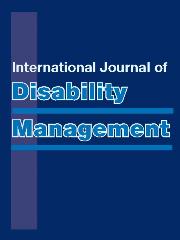Article contents
Developing the Social Security Organisation (SOCSO) of Malaysia's RTW case management system
Published online by Cambridge University Press: 12 November 2014
Abstract
The Social Security Organisation (SOCSO) of Malaysia introduced the Return to Work (RTW) Program in 2007 which is a comprehensive multidisciplinary biopsychosocial rehabilitation program for its Insured Persons who are experiencing disability due to accidents in the workplace or those claiming for invalidity. This rehabilitation program is unique as it involves the concept of “disability management” in which each Insured Person who is referred to the program, is assigned to a Disability Case Manager who is actively involved throughout the return to work process. Up to date (December 2013), 11,090 workers were motivated to participate in the SOCSO RTW Programme, and this requires many work processes, countless paper-work and massive physical files and document management. Due to this massive information flow, the demand for a more efficient information system is needed. From the beginning, the whole idea was to create an accessible, quick and user-friendly application. The application is now used by the SOCSO RTW Department in managing their information. This application was built on an open source platform which can be access through the internet. It is also a “learning application” where it uses its historical data to assist the case managers to generate standard rehabilitation plans and forecast possible return to work outcomes. The beauty of such application is that it is easily replicated, configurable (email notifications, reminders, etc) to meet the needs of the case managers in various jurisdiction. The scope of the application can also be easily defined to meet the size of an enterprise using the application. With better management of information, this application has contributed in reducing processing time, repetitive paperwork, minimal storage areas and almost real-time flow of information in the SOCSO's RTW Case Management system. Apart from that, the application now stores a wealth of information such as rehabilitation strategies for various disability or illnesses or demographic backgrounds.
- Type
- Abstract
- Information
- Copyright
- Copyright © The Author(s) 2014
- 2
- Cited by


